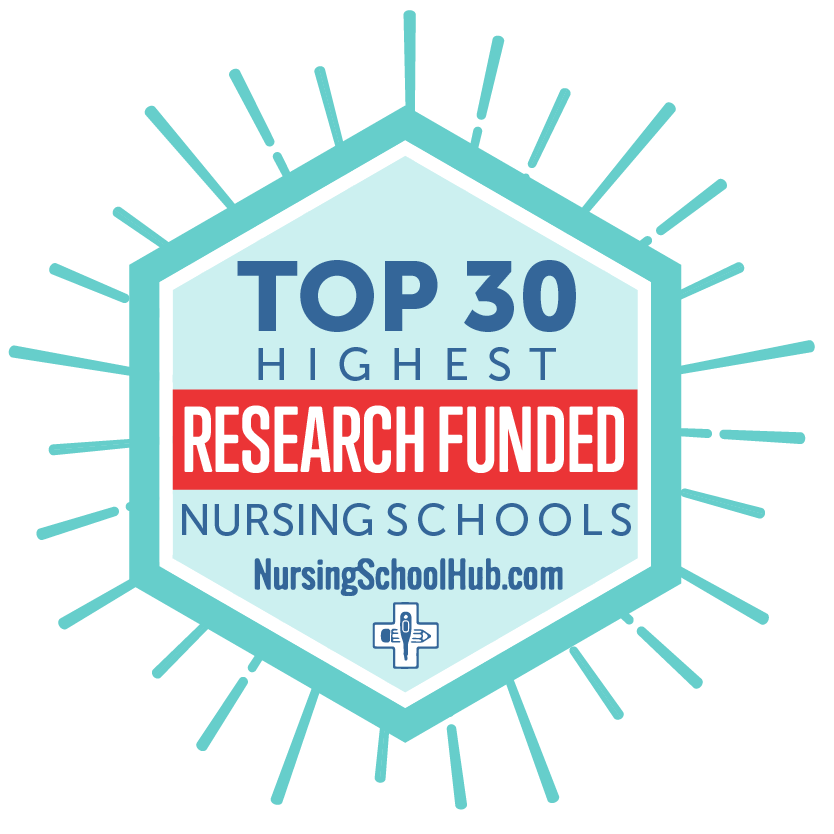
The best Nursing Research Programs train nurses to develop best practices in nursing care and conduct related nursing research. Thanks to breathless news reports about breakthroughs in cancer research, miracle surgical procedures, and game-changing pharmaceutical trials, we are all quite aware of medical research. What we don’t realize is the crucial role nurses play in medical research. Typically, most Americans think of nurses as direct caregivers, but as medicine and healthcare have become more sophisticated, the field of nursing has expanded in a multitude of ways. One of the most fascinating is nurse research.
Evidence-based nursing is the standard for modern nursing care – instituting best practices based not on tradition or custom, but on empirical data, scientific experiments, and verifiable facts. And who develops that evidence? Nurse researchers. Nursing School Hub’s ranking of the best nursing schools for research is here to point prospective nurse researchers to the institutions best suited to get them there.
OUR METHOD: RANKING THE BEST NURSING SCHOOLS FOR RESEARCH
Featured Programs
To rank the best nursing schools for research in the US, Nursing School Hub editors had a big task ahead of them. Our goal was to feature only accredited research universities and colleges with a substantial research budget, cutting-edge facilities, world-class faculty, and real-world impact. But nursing research is so varied and complex that our ultimate order ended up being the simplest: schools are ordered by their level of National Institutes of Health funding.
1. THE UNIVERSITY OF PITTSBURGH

The University of Pittsburgh’s School of Nursing (Pitt SON) is a National Institutes of Health (NIH) designated Research Intensive Environment. Pitt’s SON has received, since the 1950s, the 4th most research funding from NIH. Pitt’s nursing research programs specifically focus on Self Managed Patient Adherence and Genomics. The School of Nursing receives annual funding from the NIH in the amount of $6,132,325. Research opportunities are available through Research Hubs, Grants, Training Grants, and a Research Mentoring program.
The University of Pittsburgh was established in 1787, on what was at that time, the American Frontier. Pitt’s 125+-acre urban campus is home to nearly 29,000 students and nearly 5,000 faculty and staff members. Pitt is organized with 17 colleges/schools located on its main Pittsburgh campus and several other campuses located in Western Pennsylvania. While Pitt began as a private institution of higher learning, it is now a member school of the public Commonwealth System of Higher Education.
2. THE UNIVERSITY OF COLORADO DENVER-ANSHUTZ MEDICAL CAMPUS

The University of Colorado Denver College of Nursing Research is the division that coordinates nursing research projects. The National Institutes of Health’s annual funding to the University of Colorado Denver exceeds $4,800,000. The school’s nursing research projects give nursing students opportunities to explore how to convert observed, empirical data into practical nursing experiences. The school’s current ongoing research projects include Smart Health Applications at Home, and Military Women’s Health Priorities, among others. The University of Colorado helps students to locate internal and external nursing scholarships for current degree graduates.
The University of Colorado Denver was established in 1912. At present, the school is the largest research organization in the state. The school operates with two campuses; one in Denver proper, while the medical campus is about ten minutes away in Aurora. The Anshutz Medical Campus (through its hospital & clinics) serves more than one-half million patients annually.
3. CASE WESTERN RESERVE UNIVERSITY

Case Western Reserve University’s Frances Payne Bolton School of Nursing (Case Western SON) is involved in cutting-edge nursing research. In addition, to the important nurse-related research topics of a mechanical defect or an organic pathology, Case Western’s SON explores the psychological, social, and behavioral influence on an individual’s health. The National Institutes of Health’s annual funding for Case Western Reserve University is approximately $4.7 million applied to the research of Community Care, Aging Issues, Neuroscience, Health Self Management, and the Science of Symptoms.
Case Western Reserve University was established in 1826. Case Western began as a merger between the Case Institute of Technology and the Western Reserve University. The school’s 150+-acre urban campus in Cleveland, OH is home to nearly 12,000 students and more than 5,000 academic staff. US News ranks Case Western Reserve University among the top 40 national institutions of higher learning in the country.
4. THE UNIVERSITY OF PENNSYLVANIA

The University of Pennsylvania’s School of Nursing (Penn Nursing) is recognized as a global nursing research leader. Penn’s Nursing Research mission is to support scientific discovery in the field of nursing that can be applied (and perhaps solve) current critical nursing issues. The National Institutes of Health’s annual funding given to the University of Pennsylvania exceeds $4.3 million. Penn Nursing holds the distinction of having one of the few dedicated Nursing Research Labs. Lab research experiences are integrated with mentorship opportunities.
The University of Pennsylvania, established in 1740 is one of nine institutions of higher learning established before the Declaration of Independence was signed. Penn holds the distinction of having the first College/business School, medical school, and student union. Penn operates with 16 undergraduate and graduate schools/colleges, and a program to combine both schools to award dual degrees.
5. THE UNIVERSITY OF NORTH CAROLINA AT CHAPEL HILL

The University of North Carolina at Chapel Hill’s School of Nursing (UNC SON) nursing research has a long-standing reputation as a creative and innovative source of quality research. UNC SON received more than $3.4 million from the National Institutes of Health on an annual basis. Nursing research at the University of North Carolina at Chapel Hill covers a variety of nursing industry issues and includes Risk Benefits of Cancer Retention, and Placental DNA & Neurodevelopment Outcomes, among others. UNC SON offers nursing research students an opportunity to explore psychosocial and behavioral; while measuring them non-invasively and in real-time.
The University of North Carolina at Chapel Hill was established in 1789 and is the flagship campus of the University of North Carolina system. UNC-Chapel Hill is one of a trio of schools that claim to be the oldest institution of higher learning in the country. UNC-Chapel Hill’s 725+-acre campus is home to nearly 30,000 students studying for academic degrees awarded by the school’s fourteen colleges and schools.
6. THE UNIVERSITY OF WASHINGTON

The University of Washington’s School of Nursing (UW SON) mission is to continue to be an innovative leader on the path to scientific nursing discovery. The school’s nursing research coursework focuses on four essential areas – Symptom Science, Innovative Interventions, Health through the Aging Process, and Health Equity. UW SON’s Office for Nursing Research manages about 175 pending and active research projects using $3.2 million in annual funding provided by the National Institutes of Health. Recent nursing research projects focus on Sleep Enhancements for teenagers and menopausal women.
The University of Washington was established in 1861 and is recognized as a space-grant and sea-grant institution of higher learning. The school operates with three campuses located in Seattle, Bothell, and Tacoma. The University of Washington is considered the flagship school among the six public schools in the state of Washington. The University of Washington’s student enrollment is nearly 47,000.
7. EMORY UNIVERSITY

Emory University’s Woodruff School of Nursing offers a variety of ways to explore the world of nursing research. Emory’s nursing research areas of expertise include Urgent Care, Cancer, Anesthesia, Obesity, Gerontology, Diabetes, End of Life Care, Global Health, Public Health, Veteran’s Health, and Maternal & Infant Care, among many others. Nursing Research projects have studied Improvements in Heart Health with Exercise, Yoga for PTSD, and Isolating Fatigue Causes for Patients with Neck Cancer through $3.2+ million in funding provided by the National Institutes of Health.
Emory University is a private institution of higher learning established in 1836. The school is affiliated with the Methodist Episcopal Church and is the 2nd oldest university in the state of Georgia. Emory University is organized among nine academic colleges/schools that serve nearly 15,500 students each semester. Emory’s endowment exceeds $7 billion, the sixteenth largest in the nation.
8. THE UNIVERSITY OF MARYLAND SCHOOL OF NURSING

The University of Maryland School of Nursing’s (UMSON) mission is to continue to improve and influence modern nursing standards through the establishment of groundbreaking nursing research opportunities. UMSON received more than $6 million in research funding from the National Institutes of Health in Fiscal Year 2018 to finance the school’s three unique research-funding centers. UMSON was one of the first nursing schools in the nation to offer a PhD program. The Office of Research and Scholarships offers monthly research seminars related to nursing research issues across a range of health care topics. U.S. News & World Report recognizes UMSON’s graduate and doctoral nursing programs as among the best.
The University of Maryland Baltimore was established in 1807 and houses some of the oldest professional schools in the country. The University of Maryland Baltimore is one of five campuses that are organized under the University of Maryland network chartered by the state’s General Assembly in 1970. The university’s 72-acre campus in downtown Baltimore is home to nearly 6,700 students.
9. THE UNIVERSITY OF MICHIGAN AT ANN ARBOR
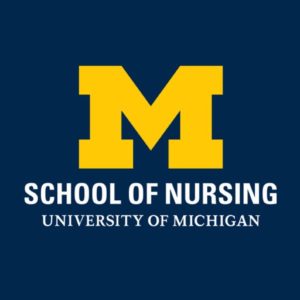
The University of Michigan at Ann Arbor’s School of Nursing (UMich SON) is among the top NIH- funded nursing research universities in the country. UMich SON received NIH funding equal to nearly $3 million to fund research in the areas the school emphasizes – Cancer Fatigues, Symptom Science, Childbirth Recovery, Health Care Effectiveness, and the Analysis & Visualization of Health Care Informatics. UMich SON’s Bio-Stat Lab allows degree graduates to explore how statistical analysis when applied to biomedical data, reveals valuable information and industry trends.
The University of Michigan at Ann Arbor was established in 1817 – 2 decades before Michigan became a state. UMich is the state’s oldest institution of higher learning that is considered among the elite research schools in the country. The school’s campus and arboretum is home to more than 46,000 students studying from several campuses in Ann Arbor (the main campus), Dearborn, Flint, and Detroit.
10. JOHNS HOPKINS UNIVERSITY

Johns Hopkins University’s School of Nursing faculty is globally recognized among the elite experts in their field of nursing research. Johns Hopkins University’s School of Nursing receives $2.6+ million in funding from the National Institutes of Health which is applied to the school’s focus areas of End of Life Care, the Prevention of Disease, Health Promotion, Women’s Health, Risk Prevention, Cardiovascular Health, and Disease Prevention. The School of Nursing at Johns Hopkins participates in a Nursing Research Retreat to strategize regarding the newly emerging health care issues requiring research.
Johns Hopkins University was established in 1876 and is recognized as the oldest research institution of higher learning in the United States. Johns Hopkins operates with ten academic divisions on campuses in Washington, DC, and Maryland. Additionally, the school has international centers in Singapore, China, and Italy. Johns Hopkins University has led all other research universities in total expenditures.
11. YALE UNIVERSITY — NEW HAVEN, CT

Yale University’s School of Nursing (SON) receives $2.5 million in funding from the National Institutes of Health to dedicate to the many new and ongoing nursing research projects. These include projects related to Family and Self Management, Minding the Baby, Insomnia Therapy, Toddlers Living in Disadvantaged Economic Homes, and High-Yield HIV Testing. Students earning their nursing degrees at Yale’s SON participate in the school’s Bio-Behavior Lab and the studies conducted at the Sleep Center regarding chronic or acute sleep issues.
Yale University was established in 1701 and is recognized as the third-oldest institution of higher learning in the nation. The Colony of Connecticut originally chartered the school. Yale is located in New Haven, a college town, on more than 1,000 acres. The school’s student enrollment exceeds 12,000. Yale’s library is considered the third largest library that is a part of an institution of higher education. US News recognizes Yale University as the third finest university in the nation.
12. THE UNIVERSITY OF CALIFORNIA LOS ANGELES

The University of California Los Angeles School of Nursing (UCLA SON) receives nursing research funding from the National Institutes of Health in the amount of approximately $2.2+ million each year. UCLA SON’s research projects have pioneered nursing research projects like HIV Gene Therapy, Ulcer Care & Prevention — including Wound Care, Sleep Apnea/Heart Failure Effects on Brain Function, and Nursing Applications of Cognitive Behavioral Therapy to Reduce Depression in Cancer Patients, among others. UCLA SON’s mission is to prepare the next generation of nursing scientists, prepared to confront future-nursing challenges locally, nationally, and globally.
The University of California Los Angeles was established in 1919 and is a member school of the University of California system. UCLA’s 17 schools/colleges/divisions offer more than 333-degree programs. The school’s 400+-acre campus is home to more than 45,400 students. UCLA holds the distinction of being the school that received the most applications in any one semester.
Program
13. NEW YORK UNIVERSITY
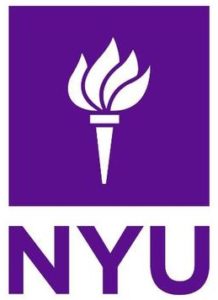
New York University’s Rory College of Nursing (NYU) manages nursing research centers and ongoing grants regarding Geriatric Nursing, Oral Health, Drug Abuse Research & Behavior Sciences, Studies in Symptom Management, Diverse Population Precision Health Initiative, and Environmental & Occupational Health. Nursing Research students can apply for fascinating summer research internships through NYU’s Rory College of Nursing. The National Institutes of Health’s annual funding to NYU is approximately $2+ million annually.
New York University was established in 1831 in Greenwich Village in downtown Manhattan. NYU is a global university with academic centers around the world in Sydney, Florence, London, Paris, Prague, and Madrid, among others. New York University’s student enrollment exceeds 51,000. The school ranks among the top 50 elite universities across the globe. NYU operates the largest academic housing organization among private schools in the country.
14. THE UNIVERSITY OF TEXAS AT AUSTIN

The University of Texas at Austin’s School of Nursing (UT Austin SON) receives approximately $1.9+ million in nursing research funding from the National Institutes of Health each year. UT Austin SON’s nursing research focuses on improving health care for the most vulnerable, underserved populations; particularly those populations who receive limited nursing research. Research programs focus on improving the opportunities for those with chronic illness and preventing illness in the most vulnerable populations.
The University of Texas at Austin was established in 1883 and is the flagship member school of the University of Texas System. UT Austin is home to several museums and libraries; among the libraries is the Lyndon Baines Johnson Library. The school’s 425+-acre campus is home to more than 51,500 students — the 3rd largest student enrollment total for a school with only one campus.
15. THE UNIVERSITY OF ALABAMA AT BIRMINGHAM

The University of Alabama at Birmingham’s School of Nursing (UA Birmingham SON) receives approximately $1.8+ million in research funding from the National Institutes of Health each year. UA SON’s elite faculty participate, by invitation, in NIH training courses regarding Human Genome Research, while other faculty members are chosen to champion a National Institutes of Health HIV study to discover how and in what ways, HIV impacts women’s lives. All three levels of academic degrees have received accreditation by the Commission on Collegiate Nursing Education (CCNE).
The University of Alabama at Birmingham was established in 1969 and is one of three member schools that are organized under the University of Alabama System. UA Birmingham is organized under twelve academic schools and colleges that offer nearly 150-degree programs on bachelor’s, master’s, and doctorate levels.
16. RUSH UNIVERSITY

Rush University is an Institute for Translational Medicine — a member research facility dedicated to improving the world’s health through research discovery and breakthroughs. Rush University’s nursing research programs receive funding through the National Institutes of Health (NIH) more than $1.8 million. Rush University’s nursing research programs are designed to promote integrity in research with the production of the highest-quality research initiatives. Ongoing programs include studies in Abdominal Fat vs. Disease, Improving the Social Skills of the Intellectually Disadvantaged, and Spiritual Care in Health Care Environments.
Rush University was established as an academic unit of the Rush Medical Center, its teaching hospital. The school operates four colleges including the Graduate School, The Medical College, The College of Nursing, and The College of Health Sciences. The Rush Medical College, from which the university began, was established in 1837, a couple of days before Chicago became a city.
17. THE UNIVERSITY OF ILLINOIS AT CHICAGO
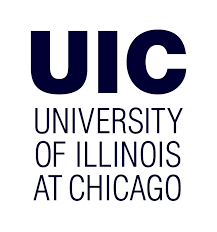
The University of Illinois at Chicago’s (UIC) nursing research, administered through the College of Nursing, is led by an elite team of faculty researchers, which include more than 25 members who are American Academy of Nursing Fellows. UIC applies its $1.6+ million in funding from the National Institutes of Health (NIH) to their Sleep Neurobiology Lab, Diabetes Research, Biobehavioral Research Lab, and several projects related to Physical Activity and Health. Current projects include Pain/Symptom Management, Binge Drinking’s Impact on Cardiovascular Health, and Behavioral Studies regarding Insomnia for those with COPD, among others.
The University of Illinois at Chicago was established in 1982 and sits alongside the famous Chicago Loop. UIC’s medical school operates with one of the largest in terms of research expenditures. The school is a member school of the University of Illinois system with a 225+-acre campus that is home to more than 30,000 students.
18. THE UNIVERSITY OF MISSOURI

The University of Missouri, Columbia’s (Mizzou) Sinclair School of Nursing is heavily involved in cutting-edge research initiatives and its published groundbreaking results. The National Institutes of Health (NIH) provides funding to Mizzou’s School of Nursing in the amount of $1.6+ million yearly. The nursing research faculty at Mizzou’s School of Nursing has shared its newsworthy research results in thousands of medical articles and journals across the globe. Mizzou students involved in nursing research programs receive tremendous support from the school’s comprehensive grant support services division.
The University of Missouri Columbia was established in 1839 under the Morrill Land Grant Act. Mizzou holds the distinction of being the first school located to the west of the Mississippi River. The school is the flagship member school of the University of Missouri system, and the Show Me state’s largest institution of higher learning in terms of enrollment (30,800).
19. THE UNIVERSITY OF MIAMI

The University of Miami’s (UM) School of Nursing and Health Studies (SONHS) is strongly committed to extensive mission-driven nursing research. Students and faculty at UM’s SONHS have delved into trying to discover the necessary information as to solve issues in Disaster, Preparedness, Health Disparities, and Vulnerable Populations, among many others. Nursing research programs are supported by simulation medical facilities and grant writing support services. UM’s SONHS receives National Institutes of Health (NIH) financing each year that exceeds $1.5 million. The University of Miami has cultivated research partnerships with the World Health Organization (WHO) and the Pan American Health Organization (PAHO).
The Dade County Circuit Court chartered the University of Miami as a private institution of higher learning in 1925. UM’s programs and curriculum is dedicated to research. UM operates with twelve schools/colleges and more than 17,000 students on over 450+-acres in the unique area of Coral Gables, FL, just south of Miami, Magic City. US News recognizes UM as the top 55 national universities.
20. THE UNIVERSITY OF ROCHESTER

The University of Rochester’s (UR) School of Nursing (SON) has been recognized for its nursing research on the topics of Palliative Care, Cancer, HIV/AIDS Research, Cardiovascular Health, Asthma, Adolescent health, and Cognitive Aging, among others. UR’s SON receives more than $1.5 million in research funding from the National Institutes of Health (NIH) each year. UR’s nursing research is best known for its meaningful findings in Healthy Behaviors, Symptom Management, Innovative Health Tech Solutions, Telemedicine in Managing Asthma, and discovering Methods to Revolutionize Systems of Health Care.
The University of Rochester was established in 1850 as a private nonsectarian institution of higher education. The school’s 600-acre suburban campus is home to more than 11,000 students studying for one of the 200 academic major programs offered. UR’s Eastman School of Music is consistently recognized as the top music school in the nation.
21. THE UNIVERSITY OF IOWA
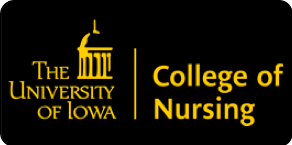
The University of Iowa’s (UI) College of Nursing offers leading-edge nursing research in three areas, Health Systems Improvement, Gerontology, and Palliative Care/Symptom Management. The University of Iowa is home to a world-famous Center for Nursing Classification & Clinical Effectiveness (CNC). The CNC is responsible for standardizing the nursing industry’s treatment/outcome language. The school receives $1.4 million from the National Institutes in Health (NIH) and is home to an NIH-funded training program regarding Pain/Symptoms. Other private, industry, and training sponsors also fund additional research at UI.
The University of Iowa was established in 1847, less than two months after Iowa become a state. The school is the flagship and oldest institution of higher learning in the state of Iowa. The school operates with eleven schools/colleges on more than 1,800 acres with nearly 33,000 students and 2,200+ administrative staff and faculty.
22. THE UNIVERSITY OF UTAH

The University of Utah’s (The U) College of Nursing is a nursing research leader with nursing grant expenditures that are near $27 million, among the top in the United States. The National Institutes of Health (NIH) contributes $1.4 million yearly to the University of Utah’s College of Nursing. The University of Utah also works closely with the National Institute for Nursing Research (NINR) the US Health Resources & Services Administration (USNRSA), and the Nation Cancer Institute (NCI).
The University of Utah was established in 1850, four years before Utah was adopted into the union. The University of Utah holds the distinction of being the oldest institution of higher learning and opening the first medical school in the state of Utah. The school’s 1,500+-acre urban campus is home to nearly 32,000 students studying from among the 190+ degree programs available.
23. THE UNIVERSITY OF SOUTH CAROLINA AT COLUMBIA

The University of South Carolina at Columbia’s (USC) College of Nursing supports its nursing research initiatives by offering nursing researchers grants and scholarship services. The nursing research leadership team offers the necessary services to develop successful award applications and award project implementation. The nursing researchers at USC utilize research-grant sites that include an at-home study regarding Breast Cancer Patients & Physical Activity, Teleconferencing Mental Health in Rural South Carolina, and Improving Care After a Chemical Incident. The National Institutes of Health (NIH) contributes more than $1.3 million to the school’s nursing research each year.
The University of South Carolina at Columbia was established in 1801. USC operates with the main campus in Columbia, and six others throughout the State of South Carolina. The school’s seven campuses are home to more than 50,000 students. The school is the flagship member school of the University of South Carolina system, and, a sea-grant university.
24. THE UNIVERSITY OF CONNECTICUT

The University of Connecticut’s (UConn) School of Nursing offers several nursing research divisions. UConn receives $1.2 million in funding from the National Institutes of Health (NIH). These research funds earmarked for nursing initiatives are applied to the Center for Nursing Scholarship and Innovation, the Center for Advancement in Managing Pain, the Center for Correctional Health Networks, the Geriatric outreach & Training with Care Program, and the Analytics & Information Management Solutions Program.
The University of Connecticut was established in 1881 under the Morrill Land Grant Act. The school holds the distinction of being a land grant, a sea-grant, and a space-grant university. UConn is about an hour and one-half from Boston, although Hartford CT, and Springfield MA are much closer to the school’s 4,000-acre campus in Storrs.
25. DREXEL UNIVERSITY

Drexel University’s nursing research initiatives and efforts are performed through the College of Nursing & Health Professions (CNHP). Drexel University seeks to create research studies that find solutions that improve health care in every way possible. The National Institutes of Health (NIH) contributes nearly $1.2 million in research funds that are used to fund the school’s cutting-edge facilities. These include the Center for Family Intervention Science, the 11th Street Family Health Services Project, and the CNHP Specialty Clinical Laboratories, among others. The school’s mission is to improve health care through quality interdisciplinary in-depth research.
Drexel University is a private institution of higher education that was established in 1891. The renowned businessman — Anthony Drexel founded the school as the Drexel Institute of Art, Science, and Industry. The school’s main urban campus is home to more than 24,000 students. Drexel University offers a unique cooperative program that coordinates students with paid employment in their field of choice while they earn their degrees.
26. OHIO STATE UNIVERSITY

Ohio State University’s (OSU) College of Nursing is dedicated to improving healthcare through in-depth quality nursing research. Ongoing research at OSU’s College of Nursing is carried out in the Center for Research & Health Analytics, the Center for Healthy Aging, Self-Management & Complex Care, and the Pitzer Center for Women, Children, and Youth. OSU’s most recent nursing research project includes championing a consortium of state, community, and academic organizations dedicated to helping reduce opioid deaths over the next 36 months. The National Institutes of Health (NIH) contributes more than #1.1 million in research funding this year.
Ohio State University was established in 1870 under the Morrill Land Grant Act. The school holds the distinction of being a sea-grant, space-grant, land grant, and flagship university for the state of Ohio. From its humble beginnings, OSU now is home to more than 61,000 students, the third-largest institution of higher education in the country.
27. DUKE UNIVERSITY

Duke University’s nursing research activities are supported and managed by the School of Nursing’s Center for Nursing Research. The National Institutes of Health (NIH) contributes more than $1 million towards Duke University’s research studies regarding health care issues. Duke’s areas of research excellence include Methods & Analytics, Population Health, Precision Health, and Clinical Innovation. The core units of the school’s Center for Nursing Research include Pre Award Liaison, Oversight and Compliance, Design and Statistics, and Faculty Science. The School of Nursing’s Research Statistics Lab is available to nurse researchers in question design, validation of measurements, and data analysis, among other techniques.
Duke University was established in 1838 with religious affiliations with the United Methodist Church. The school’s 8,500+-acre campus is home to nearly 16,000 students. Duke is recognized among the most elite universities in the country, with an acceptance rate, for the class of 2023, of 11%. The school awards about 50 academic scholarships each year.
28. VIRGINIA COMMONWEALTH UNIVERSITY

Virginia Commonwealth University’s (VCU) School of Nursing’s research initiatives is supported and managed by the Office of Research, Scholarship, and Innovation (ORSI). With the nearly $1 million in research funding from the National Institutes of Health (NIH), the nursing researchers at VCU can design and apply for funding and scholarships through ORSI’s services. Virginia Commonwealth University is home to a Biobehavioral Laboratory of Research where student and faculty prepping a grant proposal or implement biological material processes and assays.
Virginia Commonwealth University was established in 1838 as a public research institution of higher education. The school began as a medical extension to Hampden Sydney College. VCU’s 150-acre urban campus in Richmond is home to more than 31,000 students pursuing more than degrees from fourteen schools/colleges. VCU operates satellite locations in eleven countries including China, India, Russia, Brazil, Mexico, and Israel, among others.
29. WAYNE STATE UNIVERSITY

Wayne State University’s (WSU) College of Nursing is dedicated to providing an academic platform from which new nursing knowledge may be discovered through quality nursing research regarding Health Promotion, Urban Health, and Symptom Science. The National Institutes of Health (NIH) contributes more than $900,000 towards Wayne State University’s Bio Physical Laboratory, which provides nursing researchers a means to perform biochemical and molecular assays, or even genotyping.
Wayne State University was established in 1868 as a research institution of higher learning. Wayne State University operates on more than 200 acres in Detroit, MI offering hundreds of programs from thirteen schools/colleges. The academic divisions include Education Business, Engineering, Performing Arts, Law School, Medicine, Information Sciences, and Pharmacy, among others.
30. THE UNIVERSITY OF VIRGINIA

The University of Virginia’s (UVA) School of Nursing is dedicated to improving health care through knowledge discovered through nursing research. UVA’s School of Nursing’s Office for Nursing Research (ONR) is tasked with managing the research facilities, studies, and funding opportunities. The National Institutes of Health (NIH) provides approximately $890,000 in research funding to the UVA. The ONR maintains ongoing grant partnerships with several funding award organizations to set up research opportunities for nursing students and faculty.
Thomas Jefferson established the University of Virginia in 1819. It is the flagship university of the state of Virginia. The school is recognized as a UNESCO World Heritage site due to its historical value. UVA is organized with 11 undergraduate/professional schools/colleges. UVA’s 1,600+-acre ‘small city’ campus is home to more than 24,000 students and another 2,100 academic staff and faculty.
WHAT IS NURSING RESEARCH?
The work achieved through many nursing research types is directly responsible for influencing the current and future landscape of the nursing profession.
The definition and scope of nursing research, according to the National Center for Biotechnology Information (NCBI) is as follows –
Nursing research is a systematic approach of inquiry specifically undertaken to investigate and learn more about emerging issues relevant to the nursing profession.
Nursing research is now considered a critical component of a nursing education pathway. The importance of nursing research and evidence-based practice training placed early-on in a student’s education is a trend now visible in many top-rated nursing programs.
Nursing research examples generally fall within three broad categories of types of nursing research –
- Clinical Research — researchable issues in nursing in the clinical realm can be based on biological and behavioral clinical exploration
- Systems & Outcomes Research — this scope of nursing research evaluates the ways in which to improve healthcare delivery and costs
- Education Research — these types of nursing research examples focus on ways in which to improve teaching methods related to the training of nursing professionals
The nursing research examples noted above have contributed significantly to the improvement of the nursing profession (and healthcare in general) by providing nursing research and evidence-based practice techniques that employ quantifiable and verifiable results.
WHY ARE NURSE RESEARCHERS IMPORTANT?
The importance of nursing research is a critical component and contributing factor toward the creation of optimal nursing care. Without nursing research funding opportunities, advancements in the field of nursing would likely slow down, or perhaps, even falter. The reality is nursing research is now a significant contributor of data that influences healthcare policies that impact, the nursing profession, the clinician, and each patient.
The roles of nurses in research have recently changed and now include more scientifically sound research methods and techniques. The roles of nurses in research are now introduced to nursing students early on in most nursing programs. In fact, most nursing degree programs now include the concept of nursing research throughout the curriculum, and as early as possible in the education process.
More specifically, a clinical nursing research definition is as follows — A type of research performed in a clinical environment by nursing professionals with a fundamental objective to improve patient care.
The importance of nursing research is also far-reaching. Nurse researchers often work alongside other research scientists from the fields of nutrition, medicine, and pharmacology, among others.
WHERE TO LEARN ABOUT RESEARCH NURSING?
Nurse researchers typically need an MSN, DNP, or PhD, and they work primarily in academic settings such as university hospitals, or in research departments for the private healthcare industry. A strong grounding in both laboratory science and nursing is an absolute necessity.
The mission of nursing research is to ultimately improve the well-being and health of the public. Nursing research is performed all over the world; with results, opinions and theories available online from countless sources, regarding limitless nursing issues.
One of the best resources of information and knowledge in any industry is a professional organization. Professional entities that support the nursing profession include the Commission on Collegiate Nursing Education, (CCNE), or the American Association of Colleges of Nursing (AACN) are among the many resourceful online websites that offer:
- Nursing Research Articles
- Evidence-Based Practice Articles in Nursing
- Free Nursing Research Journal Articles
- Evidence-based Research in Nursing Topics
The American Journal of Nursing (AJN), which is published monthly, is a great place to find interesting nursing research articles that focus on current nursing issues. However, the AJN also provides access to the annals of nursing research — published since the AJN’s inception.
The most current nursing research articles address ongoing, chronic health care and nursing issues, as well as newly-emerging nursing issues from around the world.
Many websites are dedicated to compiling and organizing the massive amounts of research revealed on a daily basis. They cleverly use digital tools to sort through published research and extract a specific type of research, for example, evidence-based practice articles in nursing, and deliver it with ease to its interested audience.
Related: